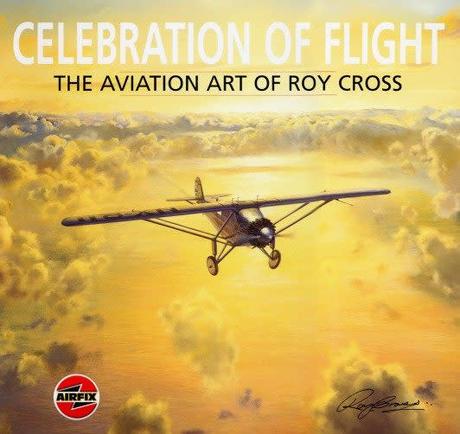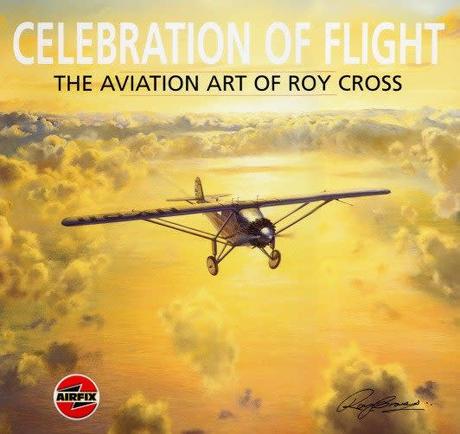Roy Cross, who died the day after his centenary, captured the imagination of generations of young boys as chief artist for Airfix during the model kit heyday of the 1960s and 1970s.
His paintings, displayed on the lid of the cardboard box or on the label of the bag, went beyond a simple guide to the paint colors to use, adding an atmosphere of romance and danger: a Lancaster limping home with its engines burning against the mackerel sky; a Fokker triplane plunging into a dogfight from an awkward angle; a Short Sunderland flying boat over bomb-rocked seas. Cross expressed speed with liberal use of white lines in "whoosh!" style.
In 1971, Airfix was Britain's largest toy manufacturer, and Cross's illustrations promised all the swashbuckling adventure of a Commando magazine to children who had been feverishly saving their pocket money and might have been put off when they tore open their sets to be confronted with cryptic sheets of plastic pieces.
Top Gear presenter James May, aged nine, recalled the 'pants-wetting excitement' caused by Cross's boxes: 'The image means that when you start making the model, you're in that scene; it's not little pieces of plastic, it's a real plane and you're flying it and there are real bandits at three o'clock trying to shoot you down. Based on the amount of time schoolboys spent thinking about Airfix artwork, May considered Cross "the most influential British artist of the 20th century".
Cross had introduced himself to Airfix in 1963, after seeing their bagged kits in Woolworth's, and knew he could do better. During the Second World War he had worked as a technical illustrator for Fairey Aviation, and Airfix would call on his expertise for more than just the artwork: Cross also advised on the casting of the Airfix Spitfire - a bestseller - after extensive correspondence with Beverley Shenstone , the aerodynamicist behind the Spitfire's unique elliptical wing shape.
Cross went on to illustrate more than 200 kits for Airfix, including ships, cars, tanks and military vehicles, railway engines and even space rockets, until work ceased in 1973 when the oil crisis drove up the cost of plastic. He then turned to maritime art and was known for the accuracy of his paintings of historic ships.
From the late 1970s onwards, Airfix began reissuing Cross's art, but in increasingly anodyne form, sweeping away the bombs and bullets that had appealed to young boys in the first place. "It's been completely disinfected," he said, "and [takes] all the excitement gone, and ruining my original painting. More recently, Airfix has returned to its vision.
He was born in Camberwell, south London, on 23 April 1924, the son of John and Ethel Cross, and spent his summers with his Aunt Nell in Hertfordshire, where on rainy days he would read her books on Constable, Turner, Frederick Leighton and Alma studied. Tadema.
This was the golden age of aviation. Young Roy recalled being taken to de Havilland airfield in Hatfield at the age of 12 and immersing himself in the exploits of pilots and women, celebrated in children's magazines such as Popular Flying, edited by Captain WE Johns, creator of Biggles. In 1938, Johns politely declined 14-year-old Roy's submission of a three-view plan of a Nieuport Scout biplane.
At this time, after attending Reay Central School in Stockwell, Roy had joined the Air Defense Cadet Corps (later renamed the Air Training Corps), and was attached to No. 343 Camberwell Squadron, and promoted to Cadet Flight Sergeant. His draftsmanship had earned him assignments for technical aircraft drawings for the Air Training Corps Gazette, and he was his squadron's instructor in aircraft recognition. With an invasion by the Germans seeming imminent, he remembered his NCO's order to go down fighting and "take one with you, boy."
Cross left school in 1940, before his 16th birthday. His poor eyesight meant he could not enlist as an aircrewman, so he went to work at a Thameside shipping office, where seeing the ships and the last sailing coasters gave him a lifelong love of the sea and ships.
By 1942, his pamphlet on US Army aircraft in use with the RAF was widely distributed, and Cross was accredited by the Air Ministry to take part in press tours to RAF airfields. James Hay Stevens, a senior employee of the ATC Gazette who idolized Cross, recommended him for a job at Fairey Aviation in the technical publications department. He subsequently illustrated Air Force maintenance books, pilot's manuals and his first book - The Birth of the Royal Air Force by Air Commodore JA Chamier - as well as contributing to magazines.
After the war he joined a commercial art studio and became an insider in what he called the 'mysteries of the de Vilbis airbrush'; Later he attended two art academies. In 1951 he produced a Morris Minor owner's manual and diagrams of the new Routemaster bus to assist staff with maintenance.
The civil aviation boom brought work at The Airplane and other magazines, through which he met his aviation heroes, including aces Douglas Bader and Robert Stanford Tuck, and Joseph Smith, the driving force behind the Spitfire program at Supermarine.
Cross's 28 color paintings of famous civilian aircraft for the Shell-Mex book Know Your Airliners allowed him to break away from technical drawings and create color advertisements, which were easier to make and more lucrative.
As the British aviation industry declined, he reinvented himself as a car artist, like his illustration hero Frank Wootton, and in 1962 he created a series of car covers for the boys' comic Eagle, with aviation covers for Swift. His first order with Airfix was artwork for a Dornier Do 217.
As a marine painter, he had many one-man shows and sold his work through an art gallery in Pall Mall.
He illustrated many books, including The Jet Aircraft of the World (with William Green, 1955) and Spitfire (with Gerald Scarborough, 1971), and his work was the subject of several others, including Celebration of Flight: The Aviation Art of Roy Cross (with Arthur Ward, 2002), Celebration of Sail (2004), and Airfix: The Vintage Years of Airfix Box Art (with Arthur Ward, 2009).


He was a founding member of the Society of Aviation Artists in 1954 and was elected a member of the Royal Society of Marine Artists in 1977.
His passions, aside from his art, were frequently changing cars ("I wish I could drive them all") and cream pies.
His wife Rita, whom he married in 1952, died in 1985. Their son survives him.
Roy Cross, born April 23, 1924, died April 24, 2024